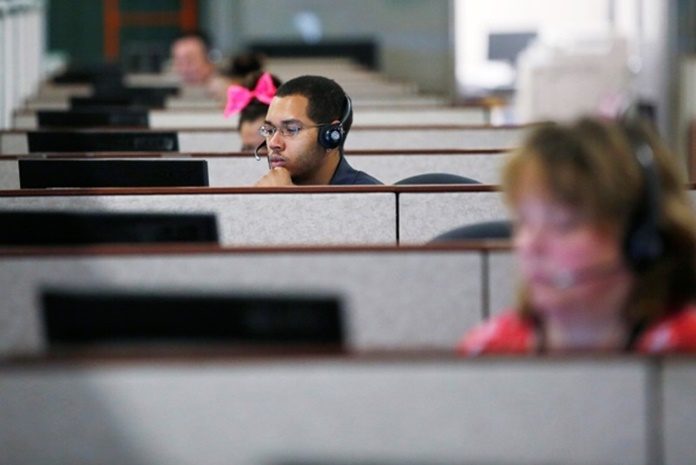Authored By Rajesh Varrier, SVP, Head of Digital Experience & Microsoft Business, Infosys
Early on, when the pandemic struck in 2020, there was a post doing the rounds on social media that went like this: “Who led your digital transformation? A.CEO B.CIO C. Covid-19” The post was meant to tickle the funny bone because “C. Covid-19” was circled as the correct choice.
Two years later, nobody can dispute the truth of this response as companies go from scrambling to move their workforce out of offices to improving the experience of remote work for employees. Attention has also shifted to ensuring workforce well-being as the increased burden of work and social isolation forced by the pandemic takes its toll on mental health.
A cursory search on professional networking site LinkedIn shows many job roles are now remote or hybrid. These are just a few ways in which the workplace has changed. As countries and companies relax mask mandates and offices re-open, employees return to a workplace vastly different from the one they left behind at the end of the last decade.
Welcome to Workplace 2.0. For one, the office as a physical entity is no longer as critical and both employees and employers realize a significant amount of work and business continuity can be accomplished even outside of it. The experience of working remotely has also awakened organizations to a whole world of possibilities they had so far, not explored by leveraging digital tools and technologies.
The cloud has been a key enabler of remote work during the pandemic, allowing staff to work from their homes and companies to continue without halting operations. This has been done mostly by lifting-and-shifting the traditional ways of the working and existing business software and tools to the cloud.
But to truly embrace Workplace 2.0, organizations need to go beyond this and embrace a digital mindset and digital technologies that allow for innovating in the new normal for improved employee experience, higher productivity and a more agile workforce and responsive organization.
These will be key differentiators for success in the post-pandemic era and give companies a competitive advantage in the marketplace. An increasing number of companies are also realizing this and are investing in digital transformation for the workplace.
Adopting Cloud for success
Embracing a digital mindset means seamless collaboration, scalability, and agility. Today’s cloud apps and cloud-native productivity tools are tailored for remote working and a distributed workforce, making them ideal for companies who are looking to improve employee experience and collaboration in today’s environment.
It follows that as companies embrace the agility and flexibility of the cloud, their talent should also be as agile and responsive. Workplace 2.0 should encourage individuals to connect in an open workplace, share information transparently and move across teams based on their alignment to the problems that must be solved.
Policies and process should support this and rather than replicating traditional ways of working, companies should encourage and empower employees to benefit from the range of apps and widgets they can use to improve efficiency.
Leveraging analytics for the workplace
As teams go virtual and work happens digitally, Workplace 2.0 is the next frontier for analytics.
One organization that deployed workplace analytics arrived at the insight that managers who spent at least 16 minutes of one-on-one time with each of their direct subordinates per week had 30% more engaged subordinates as compared to managers who spent 9 minutes. Based on this insight, the organization was able to make a shift that improved engagement.
It can help managements to get insights on which teams are over-utilized based on the active hours spent by employees across teams to prevent burn-out and optimize work allocation to enhance overall productivity of the organization.
Based on actionable insights such as how an organization spends its time and the effectiveness of collaboration across teams that workplace analytics can provide, Workplace 2.0 can evolve to become more efficient by removing process inefficiencies, transforming employee experience, and addressing collaboration overload.
Working alongside artificial intelligence (AI) and automation
Gone are the days when there was fear about AI taking away jobs. According to data from Statista and Gartner, 70% of workers in the US want AI to help them in their jobs.
AI can handle repetitive tasks using chatbots, Natural Language Processing and Machine Learning and free up employees for more creative work, innovation, complex problem solving and learning. It can play a significant role in addressing some of workplace challenges faced in the new normal such as ensuring employee experience and productivity amidst reduced social connect and collocation, finding the right information while working remotely as well as in space allocation in physical offices that takes into consideration, social distancing.
Emotional AI can help understand employee sentiment using natural language text, voice, and facial expression analyses. Online learning and upskilling can also get a fillip with training bots that personalize content based on employee experience, aspiration, and action recommendations.
Securing the new normal workplace
The overriding concern with a dispersed workforce is ensuring that security is not compromised. And indeed, these concerns are not unfounded. A survey by Infosys found companies across sectors experienced a spike in cyberattacks as the shift to remote work increased most organizations’ attack surfaces.
With all sectors getting digitized, companies need to prepare for this not only by hiring cybersecurity professionals but also through internal trainings and hiring talent for potential rather than for their existing skillsets as the demand is set to outstrip supply.











